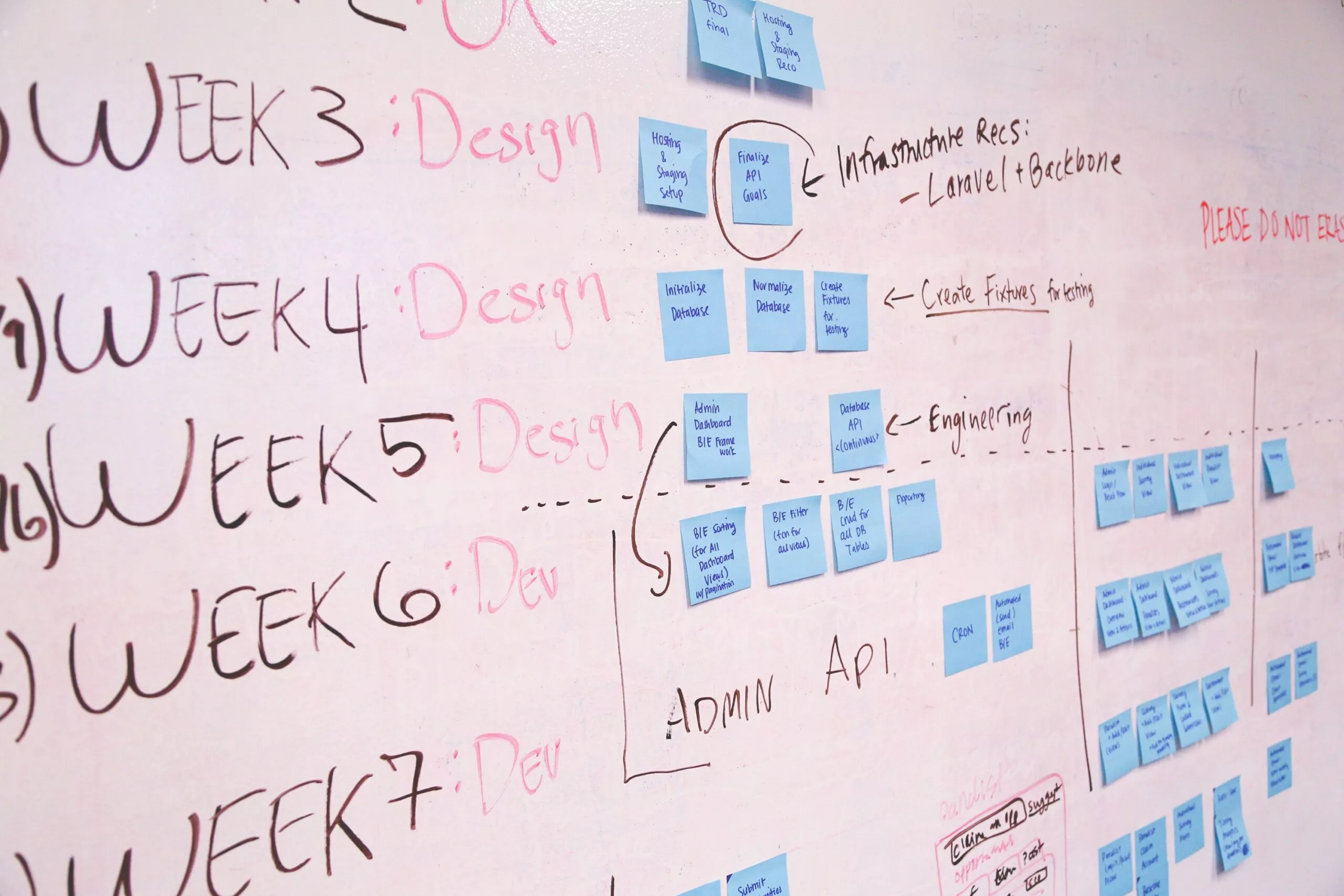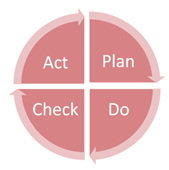
Article
Why you should consider going agile, and how to start right away
2020 will be remembered as the year we started to do things differently. Due to the COVID-19 outbreak, we suddenly changed the way we work, teach and socially interact. What did companies that were successful during this crisis do differently? What can we learn from them?
Crisis context
With the onslaught of COVID-19, organizations of all kinds suddenly faced a new way of working. Supermarkets implemented new safety measures while keeping up with increased demand. Restaurants and cafes experimented with new business models to bridge their forced closure. Schools changed from paper-based to digital education – with teachers teaching and assembling kids through virtual classrooms, online homework and digital playtime.
This shift also occurred in companies, big and small. From one day to another, they had to overhaul their way of working. They had no choice but to work remotely. Commercial teams had to step up to the plate. Marketing plans had to be adapted, constantly. Some employees were asked to do a different job. Whether this sudden change happened easily or not depended on the flexibility of the company. Some were built to be flexible with only minor adjustments, others were suddenly faced with the unknown. But why does one organization have the ability to quickly and efficiently reconfigure its way of working, while the other is rigid and slow moving in doing so?
The answer: agile
The answer lies in agile. Agile organizations are designed to be dynamic. The more agile a company, the more speed and flexibility it can demonstrate in response to fast-changing circumstances such as the COVID-19 outbreak, or others (digitalization, rapidly changing competition, etc.). There is no doubt that such flexibility provides a major competitive advantage in such times.
Philosophy of agile
Agile teams work differently from chain-of-command bureaucracies. To tackle a challenge or opportunity, the organization forms and empowers a small team, usually three to nine people, most of whom are assigned full time. The team is multidisciplinary and includes all the skills necessary to complete its tasks. It manages itself and is strictly accountable for every aspect of the work. Senior leaders provide team members with direction and vision, but do not tell them how to get there. Confronted with a large, complex problem, the team breaks it into pieces, develops solutions to each piece through rapid prototyping and tight feedback loops, and integrates the solutions into a coherent whole.
Besides that, having an agile operating model also has other benefits:
- You enable customer-centric working, because your entire way of working revolves around your end-customer
- You accelerate digital transformation, because agile working requires a set of good tools that help track the project and organize the team’s progress
- You increase performance/efficiency, because speed and flexible resource allocation are inherent to the agile way of working
- You innovate better and faster, because accelerated development cycles improve innovation speed and quality of new products
- You stand a fair chance of winning the war for talent, because you offer a diverse, entrepreneurial environment where autonomous, digital-savvy talents are key
Everyone agile?
So, should all companies turn their operating model around to become 100% agile? Not exactly. There are many steps to take when gradually moving from being silo-based to agile. In fact, many organizations have already turned to practices associated with agile teams to manage the effects of the COVID-19 outbreak. This clearly shows that ‘going agile’ can also happen gradually and pragmatically.
Case: Victoria Jewels
Victoria traditionally presents and sells products via home parties, organized by a hostess and facilitated by a Victoria consultant. The ongoing crisis prevented them from doing business the traditional way, until our sister company Upthrust jumped in to help. Via online demos & a new website, Upthrust took Victoria’s business model to the next level. Enabling 11,000 consultants to get back to work, organize live demos & sell their jewelry!
We worked in several agile squads together with the IT and Marketing teams of Victoria Jewels to:
- Deliver a state-of-the-art front-end experience with traffic peaks of +20K daily visits
- Create content with real consultants to emphasize the female entrepreneurship
- Provide a personalized web page to all consultants, enabling them to promote their own business
- Digitize the entire sales process, allowing the purchase to be linked to the consultant & live demo
Best practices
Interested in applying the agile mindset? Here are some best practices to start right away or organizational, team or project level:
- Split your work into smaller pieces: from yearly objectives to quarterly objectives and again to biweekly user stories. Prioritize them. This will pave the way for flexible resource allocation, and extra validation rounds, reducing your risk of making wrong decisions. Also make sure your breakdowns stay connected. This will enable you to keep a helicopter view.
- Break down silos: set up cross-functional teams per project involving all stakeholders (marketing, sales, consumer research, IT, etc.). This will enable you to speed things up, and tackle issues end to end.
- ‘Plan – Do – Check – Act’ on all your (marketing) initiatives such as campaigns, product launches, innovations, etc. This test & learn approach will enable you to speed up the process, and have truly consumer-centric results. So dare to start at 85% perfection instead of 100%. Then bring in customer feedback to attain those additional 15%.

- Put together project teams based on customer drivers & barriers, instead of products/channels/marketing functions. This will enable you to put your customer at the heart of everything you do.
- Empower your people: empower a project team & team lead by giving them clear responsibilities. This will foster their entrepreneurial drive, increase their engagement and hence improve results.
- Integrate technology into your way of working. Your digital tools (think Monday, JIRA, Confluence) should support collaboration and enable information sharing and documentation.
- Stay connected: check in on progress made and ways to support each other during daily/weekly standup meetings – even more important when working remotely!
- Step away from traditional marketing and start applying growth marketing, a tracked process of rapid experimentation across marketing channels to identify the most effective & efficient ways to grow a business. The art is in institutionalizing what works & dropping asap what doesn’t work.
In today’s context of continuous change, organizations need to decide how they will continue to operate. Today, there is a clear momentum to keep the agile mindset alive, by holding on to existing agile practices, and even implementing other best practices. The agile team is the heart of the agile approach, so start small and scale practices that have the potential to change the game for your organization.